



Postharvest crop losses constitute a major concern among farming communities in northern Uganda. This is primarily due to suboptimal drying facilities used by farmers, despite the availability of all year round natural solar radiation. It was in light of this challenge that the Uganda Wildlife Authority (UWA) introduced and promoted a low-cost handy solar drier among the rural farming communities in and around the Murchison Falls National Park. The purpose was to reduce human wildlife conflict incidences such as poaching or destruction of crops and properties by stray animals from the game park. The technology bears potential for out scaling to other non-targeted communities as well.
The drier consists of a wooden frame made from locally available wood material (preferably timber of 2" x 3"), measuring about 1 m wide by 2 m long and 2 m high. The floor where crop produce is placed is made of mesh of materials such as wire mesh or papyrus mat. The entire frame is surrounded by a 0.2 mm thick transparent UV stabilized plastic sheet, leaving a small portion for air inlet on the lower bed and exit vent at the top. The drier is placed in an open air place within the homestead.
The drier is most suited for drying low moisture content crop produce such as chili, maize, beans and green vegetables.
The drier is able to dry crop produce during periods of high humidity or low sunlight intensity, cover a short time to dry produce and prevents contamination of produce with bacterial or fungal spores that may occur due to improper drying procedures. It is not affected by blowing wind or rainfall; thus a farmer can leave the produce to dry on its own. Produce dried are of higher quality than when dried in open sun. The drier also reduces loss of valuable vitamins in fruits and prevents fruit burning. However, the cost associated with buying a brand new type of this drier made from modern materials is high.
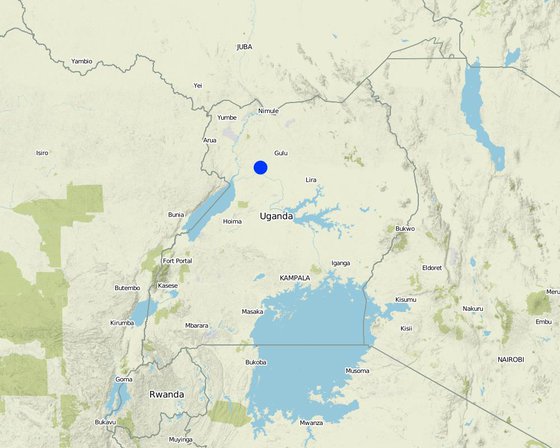
สถานที่: Anaka sub-county, Agung village, Nwoya district, ยูกันดา
ตำนวนการวิเคราะห์เทคโนโลยี: 2-10 แห่ง
การเผยแพร่ของเทคโนโลยี: ใช้ ณ จุดที่เฉพาะเจาะจงหรือเน้นไปยังบริเวณพื้นที่ขนาดเล็ก
In a permanently protected area?:
วันที่ในการดำเนินการ: น้อยกว่า 10 ปี (ไม่นานนี้)
ประเภทของการแนะนำ
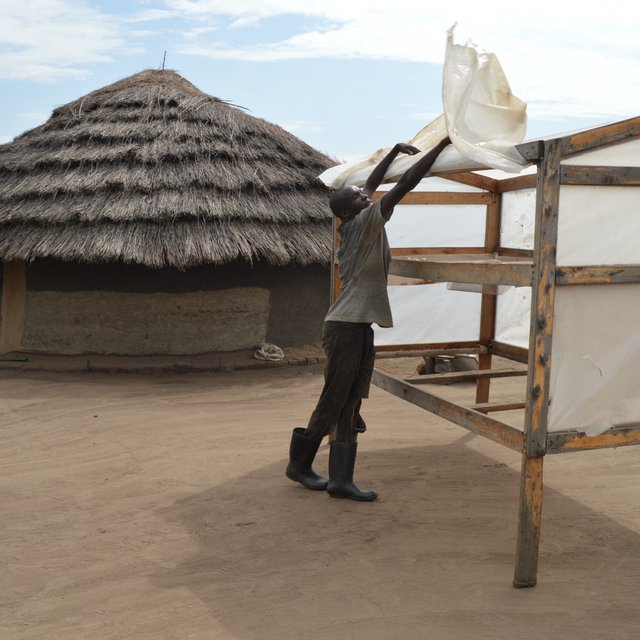

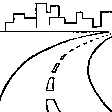


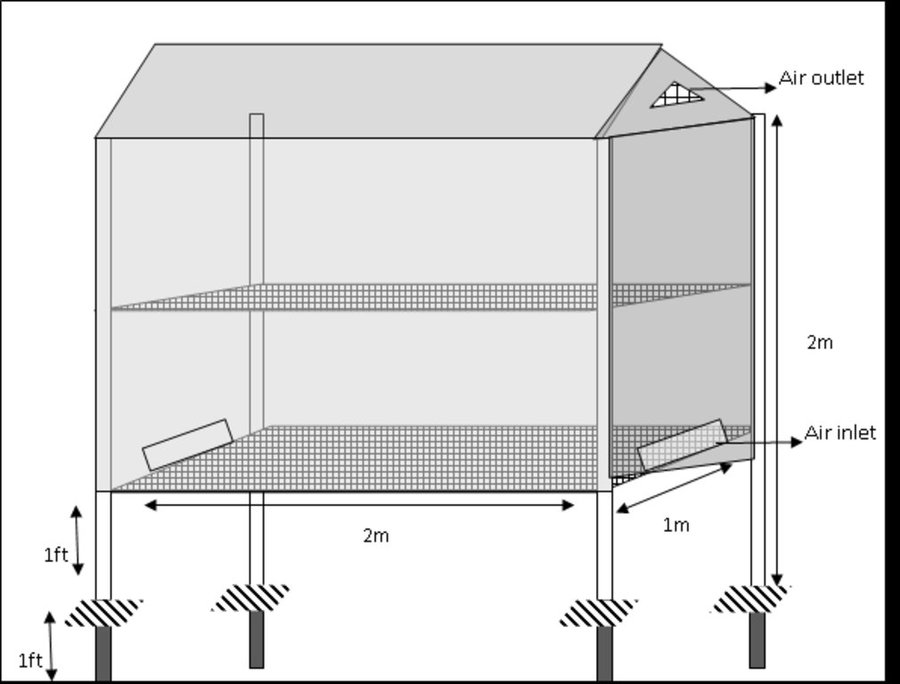
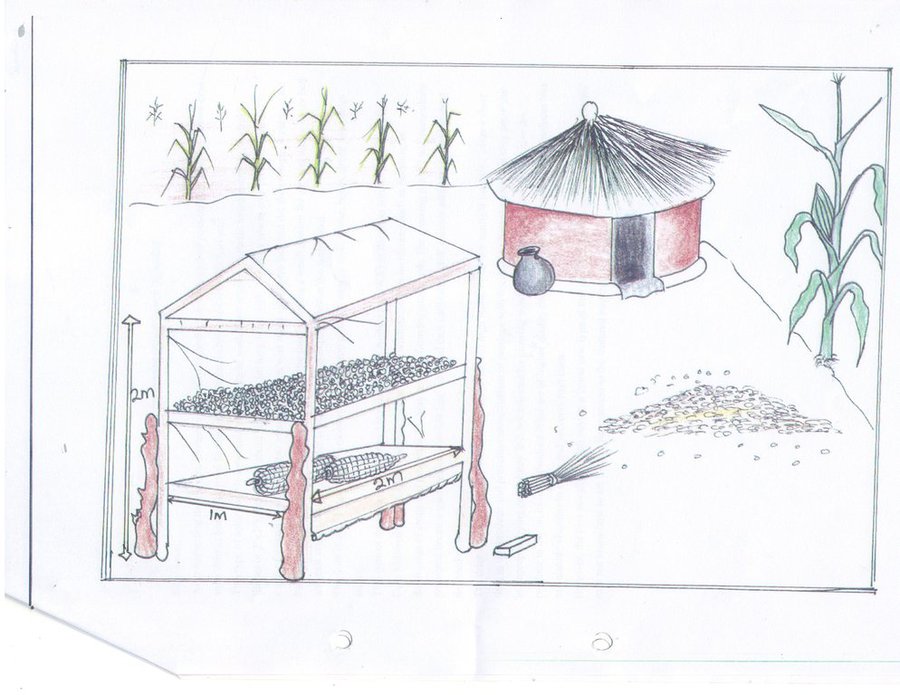
| ปัจจัยนำเข้า | หน่วย | ปริมาณ | ค่าใช้จ่ายต่อหน่วย (Uganda Shillings) | ค่าใช้จ่ายทั้งหมดต่อปัจจัยนำเข้า (Uganda Shillings) | %ของค่าใช้จ่ายที่ก่อให้เกิดขึ้นโดยผู้ใช้ที่ดิน |
| แรงงาน | |||||
| carpenter | personnel | 2.0 | 15000.0 | 30000.0 | |
| วัสดุสำหรับก่อสร้าง | |||||
| Timber 3"X2" | pieces | 10.0 | 9000.0 | 90000.0 | |
| Stabilised UV sheet | square meter | 12.0 | 15000.0 | 180000.0 | |
| Iron nails assorted | kg | 2.0 | 6000.0 | 12000.0 | |
| ค่าใช้จ่ายทั้งหมดของการจัดตั้งเทคโนโลยี | 312'000.0 | ||||
| Total costs for establishment of the Technology in USD | 85.48 | ||||
| ปัจจัยนำเข้า | หน่วย | ปริมาณ | ค่าใช้จ่ายต่อหน่วย (Uganda Shillings) | ค่าใช้จ่ายทั้งหมดต่อปัจจัยนำเข้า (Uganda Shillings) | %ของค่าใช้จ่ายที่ก่อให้เกิดขึ้นโดยผู้ใช้ที่ดิน |
| แรงงาน | |||||
| personnel | persons | 2.0 | 10000.0 | 20000.0 | 100.0 |
| วัสดุสำหรับก่อสร้าง | |||||
| UV stabilized polythene sheet | square meters | 5.0 | 15000.0 | 75000.0 | 100.0 |
| Iron nails (assorted) | kg | 1.0 | 6000.0 | 6000.0 | 100.0 |
| ค่าใช้จ่ายทั้งหมดของการบำรุงรักษาสภาพเทคโนโลยี | 101'000.0 | ||||
| Total costs for maintenance of the Technology in USD | 27.67 | ||||
improved post harvest handling
good quality product fetches better prices
the product stays in the drier during the drying period
good post harvest handling
better quality products